Related Research Articles

Scapa Flow is a body of water in the Orkney Islands, Scotland, sheltered by the islands of Mainland, Graemsay, Burray, South Ronaldsay and Hoy. Its sheltered waters have played an important role in travel, trade and conflict throughout the centuries. Vikings anchored their longships in Scapa Flow more than a thousand years ago. It was the United Kingdom's chief naval base during the First and Second World wars, but the facility was closed in 1956.

Vasa or Wasa is a Swedish warship built between 1626 and 1628. The ship sank after sailing roughly 1,300 m (1,400 yd) into her maiden voyage on 10 August 1628. She fell into obscurity after most of her valuable bronze cannons were salvaged in the 17th century, until she was located again in the late 1950s in a busy shipping area in Stockholm harbor. The ship was salvaged with a largely intact hull in 1961. She was housed in a temporary museum called Wasavarvet until 1988 and then moved permanently to the Vasa Museum in the Royal National City Park in Stockholm. The ship is one of Sweden's most popular tourist attractions and has been seen by over 35 million visitors since 1961. Since her recovery, Vasa has become a widely recognized symbol of the Swedish Empire.
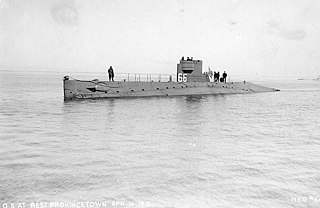
USS O-5 (SS-66) was one of 16 O-class submarines built for the United States Navy during World War I.

HNLMS De Ruyter was a light cruiser of the Royal Netherlands Navy. She was originally designed as a 5,000 long tons (5,100 t) ship with a lighter armament due to financial problems and the pacifist movement. Later in the design stage, an extra gun turret was added and the armor was improved. She was the seventh ship of the Dutch Navy to be named after Admiral Michiel Adriaenszoon de Ruyter.
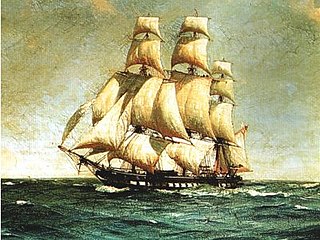
Lutine was a frigate which served in both the French Navy and the Royal Navy. She was launched by the French in 1779. The ship passed to British control in 1793 and was taken into service as HMS Lutine. She sank among the West Frisian Islands during a storm in 1799.

HMS Royal George was a ship of the line of the Royal Navy. A first-rate with 100 guns on three decks, she was the largest warship in the world at the time of her launch on 18 February 1756. Construction at Woolwich Dockyard had taken ten years.

HNLMS Kortenaer was an Admiralen-class destroyer of the Royal Netherlands Navy, named after 17th century Dutch Admiral Egbert Bartholomeusz Kortenaer.

The second USS Oneida was a Mohican-class screw sloop-of-war in the United States Navy. During the Civil War, she destroyed the CSS Governor Moore and served in blockade operations. She was attached to the Asiatic Squadron from 1867–1870. She sank in 1870 outside Yokohama, Japan after collision with the British steamer Bombay. A court of inquiry, headed by the local British consul, found the officers of Oneida were responsible for the collision, with Bombay's captain being blamed for not staying at the scene to render assistance – a decision that caused some controversy. A less exhaustive U.S. naval court of inquiry laid the blame entirely on the Bombay's actions. Japanese fishing boats saved 61 sailors but 125 men lost their lives. The American government made no attempt to raise the wreck and sold it to a Japanese wrecking company. The company recovered many bones from the wreck and interred them at their own expense. The Japanese erected a memorial tablet on the grounds of Ikegami Temple in Tokyo and held a Buddhist ceremony in the sailors' memory in May 1889.

Marine salvage is the process of recovering a ship and its cargo after a shipwreck or other maritime casualty. Salvage may encompass towing, lifting a vessel, or effecting repairs to a ship. Protecting the coastal environment from oil spillages or other contaminants from a modern ship can also be a motivator, as oil, cargo, and other pollutants can easily leak from a wreck.

The SS City of Rio de Janeiro was an iron-hulled steam-powered passenger ship, launched in 1878, which sailed between San Francisco and various Asian Pacific ports. On 22 February 1901, the vessel sank after striking a submerged reef at the entry to San Francisco Bay while inward bound from Hong Kong. Of the approximately 220 passengers and crew on board, fewer than 85 people survived the sinking, while 135 others were killed in the catastrophe. The wreck lies in 287 feet (87 m) of water just off the Golden Gate and is listed in the National Register of Historic Places as nationally significant.

The Diosa del Mar was a wooden schooner that sank off of the coast of Catalina Island at 2:25 pm on July 30, 1990.
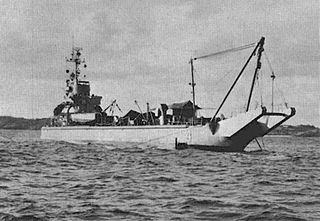
USS Windlass, a Gypsy-class salvage lifting vessel of the United States Navy, was originally conceived as LSM-552 and laid down on 27 August 1945 at Houston, Texas, by Brown Shipbuilding Corporation. Launched on 7 December 1945; and commissioned on 9 April 1946 in Houston at the Tennessee Coal and Iron Docks.
The Aeolian Sky was a Greek-run freighter built in 1978, which collided with another ship near the Channel Islands and after a failed attempt at salvage sank off the coast of Dorset, England in a storm in late 1979.
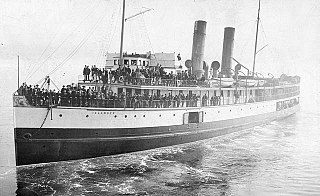
The SS Islander was a 1519-ton, 240-foot (73 m) steel hull, schooner-rigged twin-screw steamer, built in Scotland in 1888, and owned and operated by the Canadian-Pacific Navigation Company.
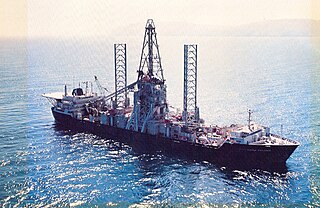
Project Azorian was a U.S. Central Intelligence Agency (CIA) project to recover the sunken Soviet submarine K-129 from the Pacific Ocean floor in 1974 using the purpose-built ship Hughes Glomar Explorer. The 1968 sinking of K-129 occurred approximately 1,600 miles (2,600 km) northwest of Hawaii. Project Azorian was one of the most complex, expensive, and secretive intelligence operations of the Cold War at a cost of about $800 million, or $4.7 billion today.

America was a packet boat transporting passengers, mail, and packages between settlements along the North Shore of Lake Superior, an inland sea in central North America. Built in 1898, America sank in Washington Harbor off the shore of Isle Royale in 1928, where the hull still remains. The wreck was placed on the National Register of Historic Places in 1984.
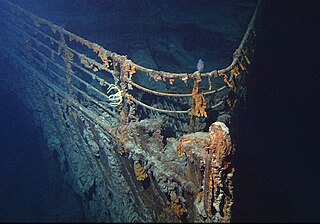
The wreck of the Titanic lies at a depth of about 12,500 feet, about 370 nautical miles south-southeast off the coast of Newfoundland. It lies in two main pieces about 2,000 feet (600 m) apart. The bow is still recognisable with many preserved interiors, despite deterioration and damage sustained hitting the sea floor. In contrast, the stern is completely ruined. A debris field around the wreck contains hundreds of thousands of items spilled from the ship as she sank. The bodies of the passengers and crew would have also been distributed across the sea bed, but have since been consumed by other organisms.
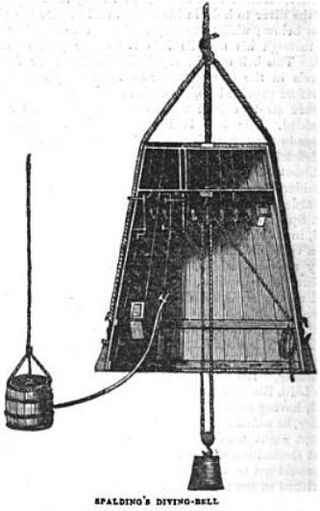
Charles Spalding was an Edinburgh confectioner and amateur engineer who made improvements to the diving bell. He died while diving to the wreck of the Belgioso in Dublin Bay using a diving bell of his own design.

Grecian was a steel bulk freighter built in 1891 by Globe Iron Works at Cleveland, Ohio. She was a sister ship to Norman, also wrecked nearby. The ship was 296 feet (90 m) long, with a beam of 40 feet (12 m) and a gross register tonnage of 2,348 tons.
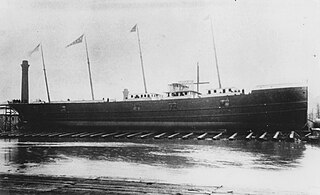
References
- ↑ "www.divetech.ca" . Retrieved 2017-02-04.
- ↑ "saveontarioshipwrecks.ca" . Retrieved 2017-02-04.
- ↑ "images.maritimehistoryofthegreatlakes.ca" . Retrieved 2017-02-06.